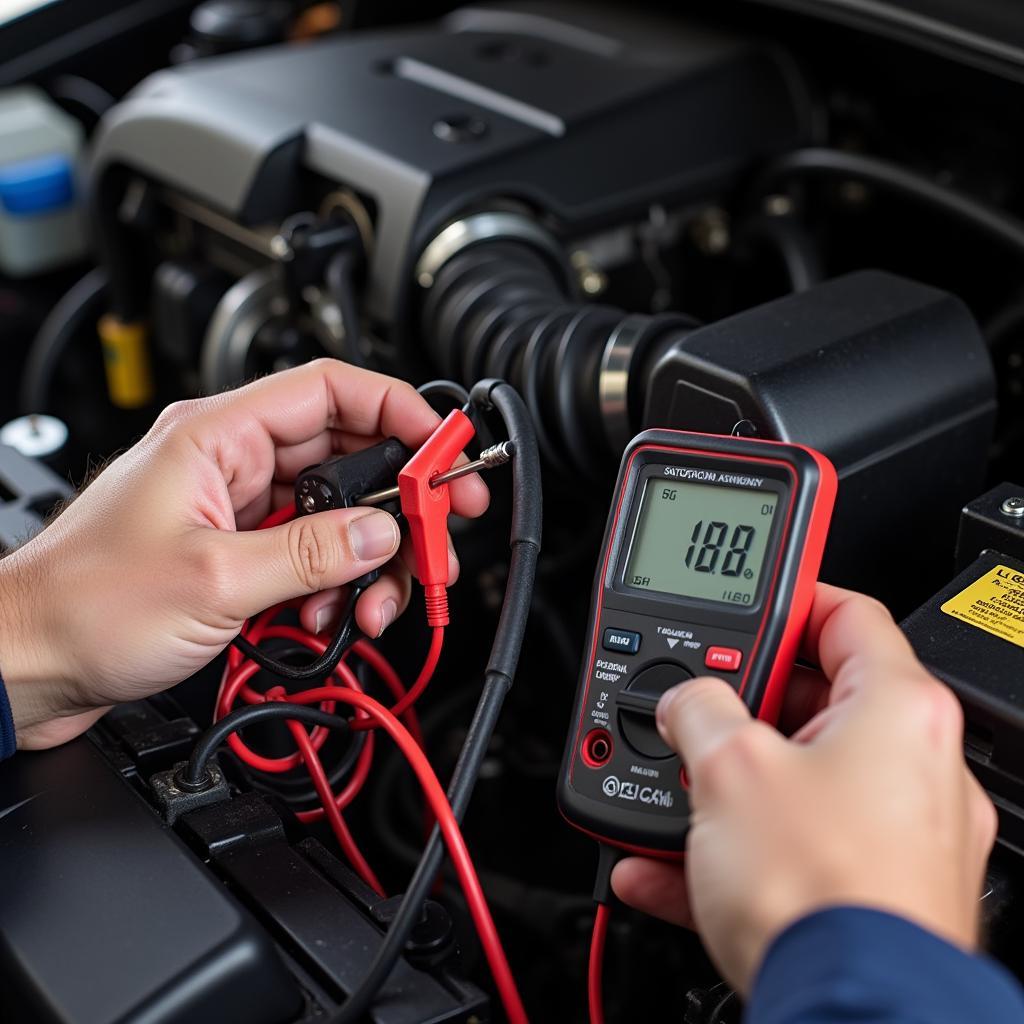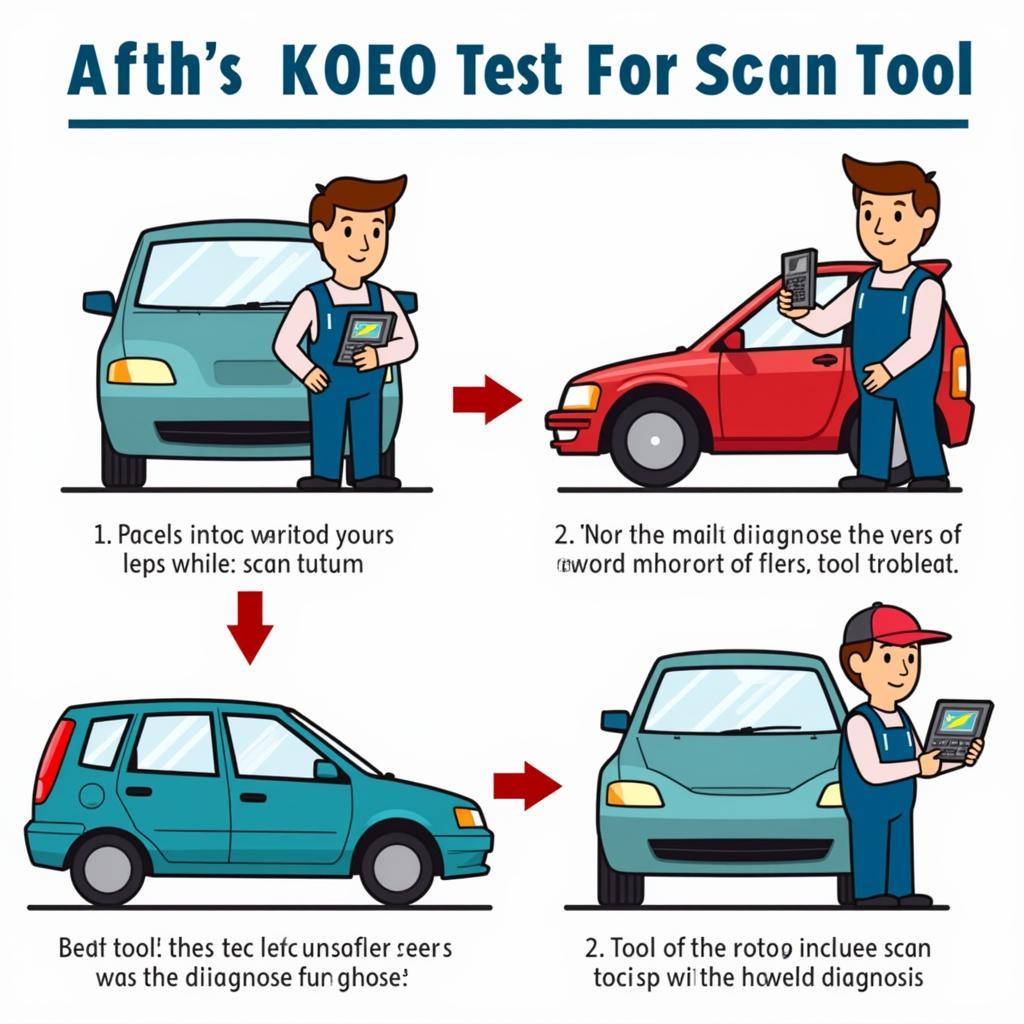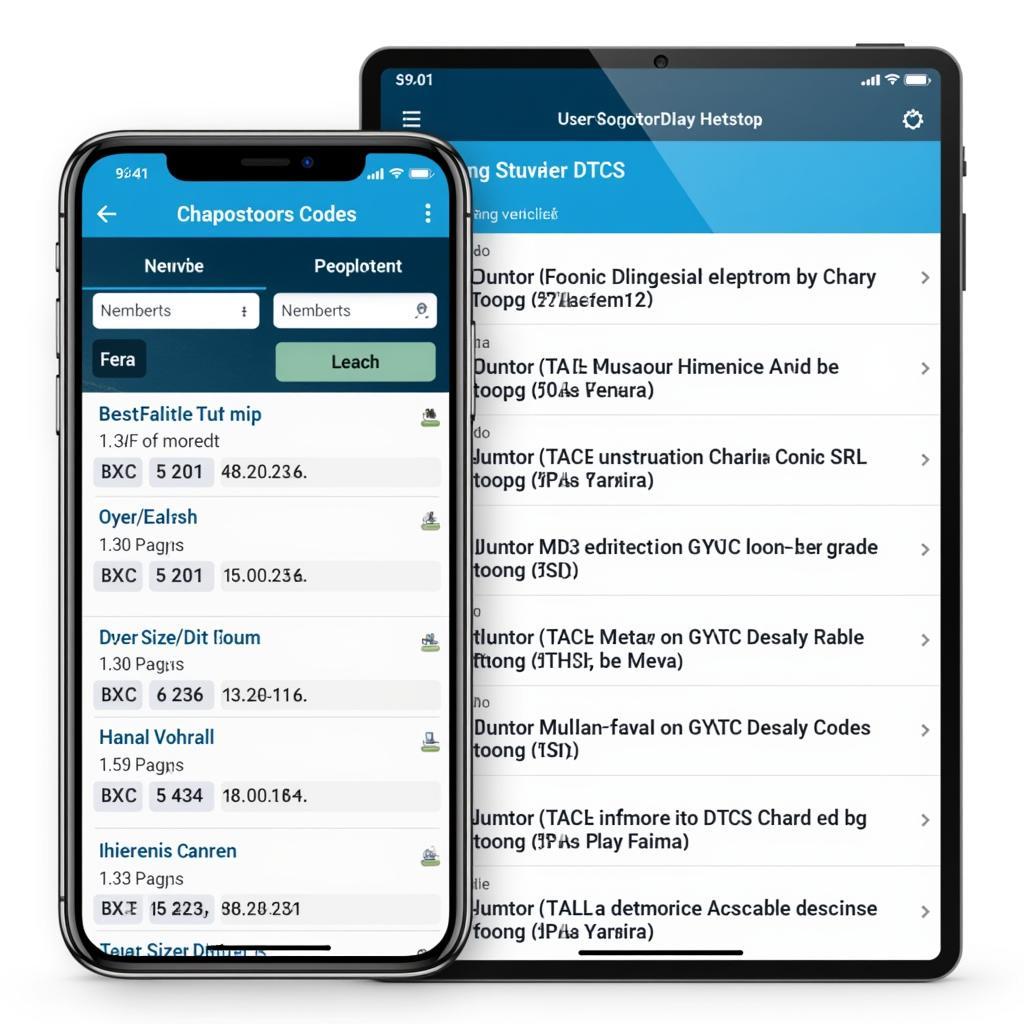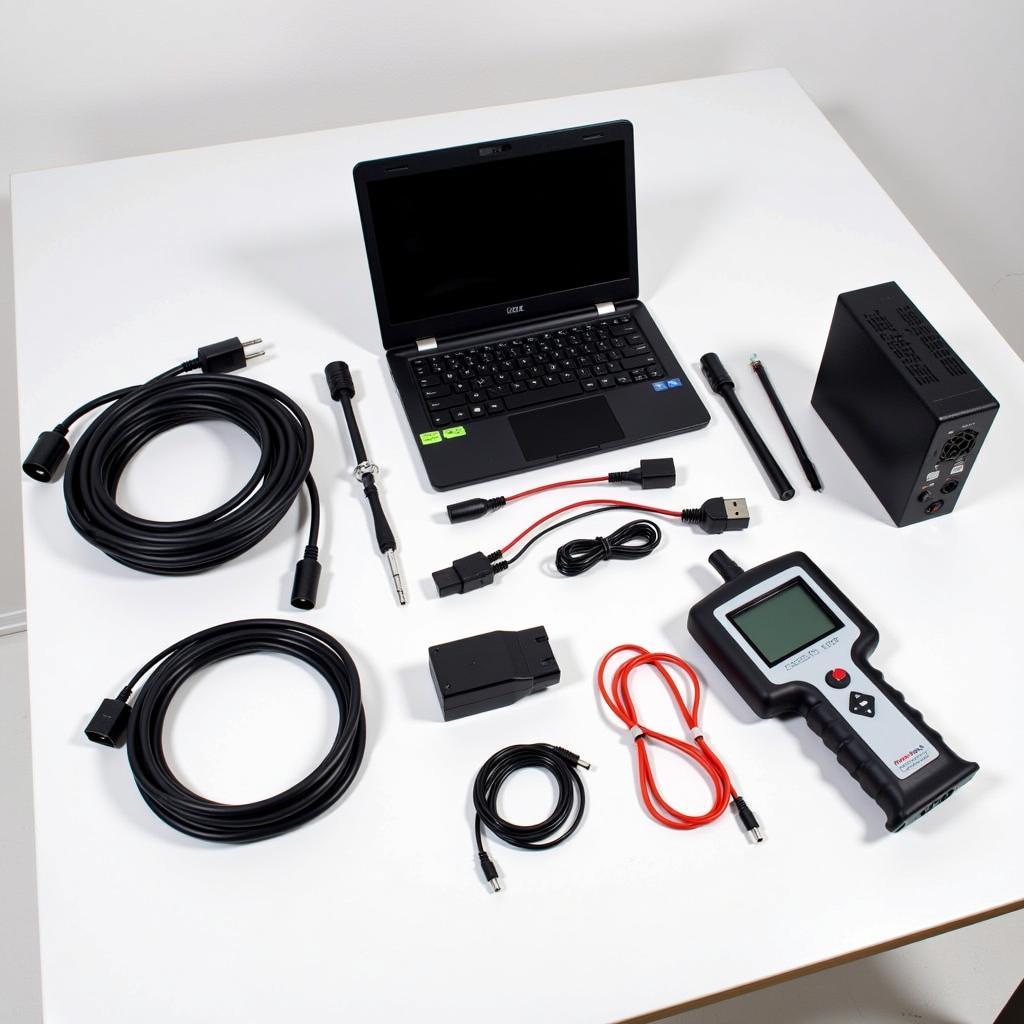Performing a Key On Engine Off (KOEO) test is crucial for diagnosing car troubles, even without a fancy scan tool. This guide provides practical methods for conducting KOEO tests, helping you pinpoint issues and save money on potentially unnecessary repairs.
Understanding the KOEO Test
The KOEO test checks the functionality of various electronic components and systems within your vehicle while the engine is off. This allows you to identify potential problems with sensors, actuators, and the computer itself, without the complexities of a running engine. It’s like checking the individual ingredients of a cake before baking – it lets you catch any problems early.
Performing a KOEO Test Without a Scan Tool: Is it Possible?
While a scan tool offers comprehensive diagnostics, a basic KOEO test can be performed without one. You can glean valuable information by observing warning lights, listening for unusual sounds, and using a simple voltmeter. This is especially helpful for older vehicles or those without advanced onboard diagnostics.
Visual Inspection and Listening for Clues
Start by turning the ignition key to the “on” position without starting the engine. Observe the dashboard for any warning lights. A check engine light, ABS light, or other illuminated indicators can provide clues about potential issues. Listen carefully for any unusual clicks, buzzes, or whirring sounds coming from the engine bay or other areas of the vehicle.
Using a Voltmeter for Basic KOEO Testing
A voltmeter can be used to check the voltage of various sensors and circuits. For example, you can test the battery voltage, alternator output, and sensor readings. This requires some knowledge of your vehicle’s wiring diagram and sensor specifications. However, even basic checks can identify significant electrical faults.
 Voltmeter Testing During KOEO Test
Voltmeter Testing During KOEO Test
Interpreting the Results of Your KOEO Test
Interpreting the results requires understanding what the normal values should be. A repair manual specific to your vehicle’s make and model will provide this information. Remember, a KOEO test without a scan tool provides limited information. It’s a starting point for further diagnosis, not a definitive answer.
What if I Can’t Find the Problem?
If you’ve performed a KOEO test without a scan tool and still can’t identify the issue, it’s time to seek professional help. A qualified mechanic with access to advanced diagnostic equipment can perform a more thorough analysis and pinpoint the problem.
KOEO Test Without Scan Tool: Limitations and Benefits
While a KOEO test without a scan tool has its limitations, it can still be a valuable tool. It’s a quick, easy, and cost-effective way to gather preliminary information about potential problems.
Benefits of a KOEO Test Without a Scan Tool
- Cost-effective: No need for expensive scan tools.
- Quick and easy: Can be performed in minutes.
- Provides preliminary information: Helps narrow down potential problems.
Limitations of a KOEO Test Without a Scan Tool
- Limited information: Doesn’t provide the same level of detail as a scan tool.
- Requires some knowledge of vehicle systems: You need to know what to look and listen for.
- May not identify all problems: Some issues require more advanced diagnostics.
 KOEO Test Limitations and Benefits
KOEO Test Limitations and Benefits
KOEO Test: A Stepping Stone to Accurate Diagnosis
“A KOEO test, even without a scan tool, is a crucial first step,” says John Miller, a veteran automotive electrical engineer. “It’s like a detective gathering initial clues. It might not solve the entire mystery, but it points you in the right direction.” David Smith, another experienced technician, adds, “Don’t underestimate the power of observation. Sometimes, a simple visual inspection can reveal more than you think.”
Performing a KOEO test without a scan tool can empower you to take the first steps in diagnosing your car’s problems. While it might not replace a professional diagnosis, it can save you time and money in the long run. Need further assistance? Connect with the experts at ScanToolUS at +1 (641) 206-8880 or visit our office at 1615 S Laramie Ave, Cicero, IL 60804, USA.
 KOEO Test Leading to Accurate Diagnosis
KOEO Test Leading to Accurate Diagnosis
FAQ
- Can I perform a KOEO test on any vehicle? Yes, you can perform a basic KOEO test on most vehicles, though the information you can obtain without a scan tool might vary.
- What should I do if I don’t see any warning lights during the KOEO test? This doesn’t necessarily mean there are no problems. Further diagnosis might be required.
- How often should I perform a KOEO test? It’s a good idea to perform a basic KOEO test periodically, especially if you suspect a problem.
- Can a KOEO test damage my car? A properly performed KOEO test should not damage your vehicle.
- Is a KOEO test the same as a self-diagnostic test? While similar, a self-diagnostic test often requires a scan tool to access more detailed information.
- What if my car doesn’t have an OBD-II port? Older vehicles might not have an OBD-II port, but you can still perform a basic KOEO test using visual and auditory cues, and a voltmeter.
- Do I need a specific type of voltmeter for a KOEO test? A standard digital multimeter is sufficient for most basic KOEO tests.


